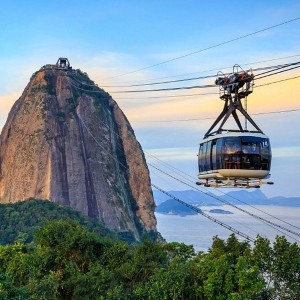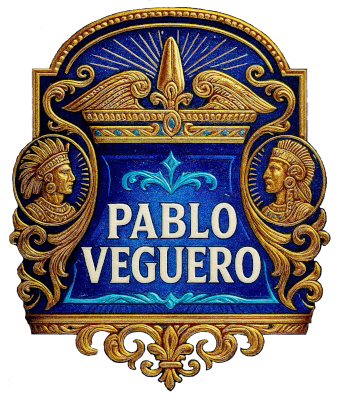
Brazilian Cigar Cultivation
Step into Brazil’s sun-drenched tobacco fields, where the air carries the scent of curing leaves and the rhythm of samba. Brazilian cigars stand out in the cigar world with earthy flavours and natural sweetness. Farmers in Bahia often share stories of trading Mata Fina leaves at local festivals, only to see their tobacco appear in blends that captivate lounges from São Paulo to New York. Beyond smoking, these cigars tell a vibrant tale of tropical climate, local ingenuity, and enduring craftsmanship. Each leaf reflects the dedication of growers who nurture it from seed to sun-kissed wrapper, offering a medium-to-full-bodied experience that balances spice, cocoa, and leather. As Brazil’s cigar scene grows, it combines history, innovation, and artisanal skill to produce a truly distinctive smoking experience.
History and Heritage of Brazilian Tobacco
Brazilian tobacco cultivation predates European arrival, with indigenous tribes using tobacco in rituals. Portuguese explorers arrived in 1500, but the industry thrived later in Bahia’s Recôncavo region, exporting dark, aromatic leaves to Europe. In 1873, German immigrant Geraldo Dannemann established Brazil’s first cigar factory, igniting a legacy of premium production. Over the centuries, farmers adapted to challenges such as storms and soil variations, spreading tobacco cultivation across microclimates. Local legends, like a shipwrecked grower whose seeds sprouted on a neighboring island, illustrate the resilience and creativity that shaped Brazil’s cigar culture. Today, the industry blends these historical roots with modern techniques, sustaining a reputation for bold, flavourful cigars that complement the global cigar market while retaining uniquely Brazilian character.
Terroir and Tobacco Varieties
Bahia’s microclimates support Brazil’s key tobacco varieties. Mata Fina grows in full sun, yielding sweet, rich leaves ideal for wrappers. Mata Sul, rare and mild, thrives on hillside slopes, while Arapiraca delivers a robust, full-bodied profile from Alagoas’ sandy soils. Hot, humid weather and seasonal rainfall nurture these plants, though floods or storms sometimes force replanting. Additionally, volcanic soils contribute a subtle mineral note, enhancing complexity and flavour. Farmers manage these challenges with care and experience, ensuring leaves meet high-quality standards. By combining climate, soil, and meticulous cultivation, Brazil produces wrappers and fillers with a distinctive smoothness, elasticity, and depth, which global manufacturers prize for blending and premium cigar production.
Flavour Profile and Smoking Experience
Brazilian cigars offer a medium-to-full-bodied smoke with layered notes of cocoa, leather, coffee, and natural sweetness. Mata Fina and Arapiraca wrappers provide a dark, oily appearance, a smooth draw, and a balance of spice and creamy finesse. Brands such as CAO Brazilia demonstrate these characteristics, delivering earthy depth with a tropical nuance reminiscent of Brazil’s vibrant culture. Smokers enjoy a consistent, flavourful experience, whether seeking bold intensity or subtle richness. Transitioning between sections of the cigar, the palate discovers new layers of aroma and taste, highlighting Brazil’s attention to detail in leaf selection, curing, and rolling. Overall, these cigars captivate enthusiasts with their personality and craftsmanship.
Industry, Farmers, and Artisans
Brazil exports large quantities of tobacco globally, producing 455,000 tonnes in 2024 and generating $2.9 billion. Many Brazilian leaves appear in cigars rolled in Honduras or Nicaragua, yet local factories like Dannemann and Menendez Amerino craft premium sticks under tight quality control. Farmers in Bahia and Rio Grande do Sul rise early to tend fields, battling weather, pests, and regulations to grow exceptional leaves. In factories, rollers apply traditional techniques, often passed down for generations, crafting cigars with precision. These artisans create products that combine industrial scale with cultural heritage, ensuring Brazilian cigars deliver a consistent, distinctive, and vibrant experience. Festivals such as Festival Origens celebrate this culture, uniting cigars with chocolate, coffee, and cachaça.
Brazilian Cigars: Bold, Sweet, and Distinctive
Brazilian cigars embody the energy, flavour, and culture of their homeland. From Bahia’s sun-soaked fields to lively tabacaleras, each cigar reflects skill, tradition, and tropical climate. Smokers experience bold spice, subtle sweetness, and rich complexity in every puff. Whether enjoyed in a quiet lounge or a festive gathering, Brazilian cigars offer a taste of Brazil’s fiery spirit. They combine history, terroir, and artisanal skill to produce a smoke that delights both enthusiasts and collectors, celebrating the vibrant heart of Brazilian cigar craftsmanship.




